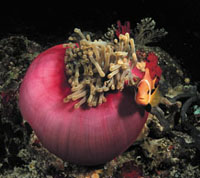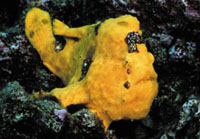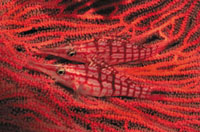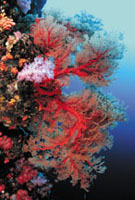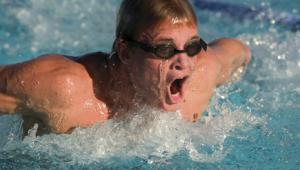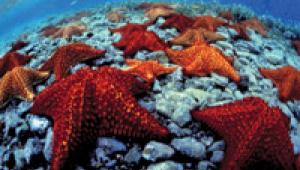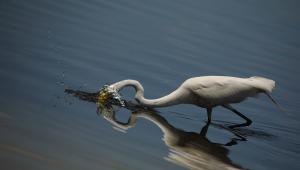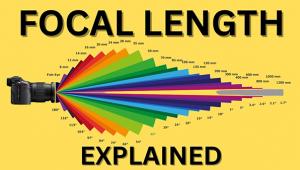Dive In
10 Easy Tips For Underwater Action
Last year in Shutterbug,
I offered 10 reasons why a topside photographer might want to dive into
underwater photography. My reasons included: challenging yourself with
one of the most rewarding photo specialties around; putting your photo
skills to work for a marine conservation organization; displaying underwater
pictures on your home or office wall that will delight viewers; and
traveling to tropical paradises around the world to have fun with your
hobby. |
|||
4. Hand holding
is a good thing. The biggest enemy of underwater photographers is something
called "backscatter"--particles that are illuminated in the
water when a flash is fired. To eliminate or reduce these annoying and
distracting white dots in a picture (which create what looks like an underwater
snowstorm in a picture), hold your flash off-camera--as far as possible.
When you hold the flash off-camera, only the sides of the particles are
illuminated--and not the part of the particles that are facing the camera.
The particles are still there, but they are less visible--and sometimes
totally invisible. |
|||
7. Beware
the background. The background can make or break a picture. When composing
a picture, make sure a diver's fin, fish tail, anchor line, and
so on are not "sticking out of your subject's head."
Also, when taking fish and diver portraits, try to choose a plain background--like
the deep blue sea or a evenly colored patch of coral. |
|||
Systems For Scuba Diving Shooters There are many underwater cameras
for scuba divers who are just getting their feet wet with underwater photography.
Cameras are also available for serious shooters who are fortunate enough
to have a small fortune to spend on gear. Manufacturers/Distributors Helix Ikelite Underwater Systems
(Housings, Mamiya (Sekonic Nikon Inc. (Pro/amateur camera,
flashes, Pioneer Research and Marketing
(Sea Life Reef Master; Novice camera) RTS (EWA Marine; Flexible housings) Sea&Sea Underwater Photo
(Pro/novice cameras, housings, flashes, accessories) Subal USA (Housings) Underwater Photo Tech (They
can repair your leaky gear) |
- Log in or register to post comments
